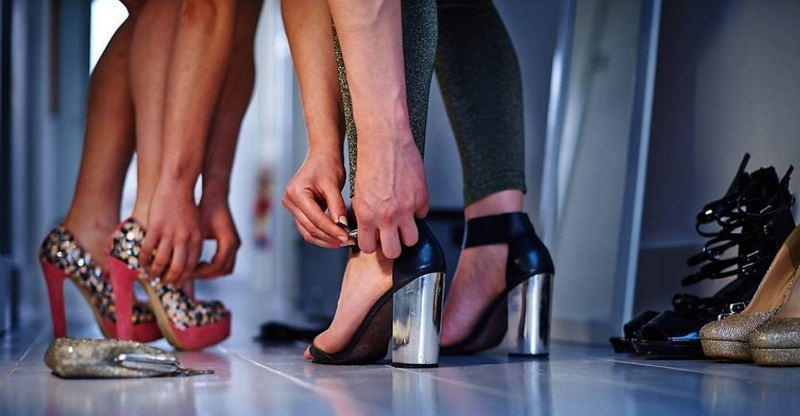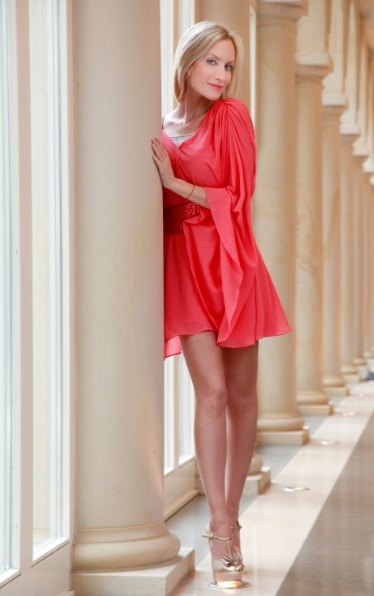Content Menu
● The Attraction Factor
● Why Do Men Prefer High Heels?
● The Social Dynamics
● The Psychological Perspective
● The Risks and Realities
● High Heels in Professional Settings
● The Cultural Significance
● Expanding Further
● Historical Context
● Celebrities & Influencers
● Personal Stories
● Fashion Trends
● Comparative Analysis
● Scientific Studies
● Alternatives
● Conclusion
● FAQ
>> 1. Do all men prefer women in high heels?
>> 2. Are there any health risks associated with wearing high heels?
>> 3. How do high heels affect a woman's posture?
>> 4. Can wearing high heels boost a woman's confidence?
>> 5. Is there scientific evidence supporting men's preference for women in high heels?
● Citations:
High heels have long been a staple of women's fashion, often associated with elegance, confidence, and femininity. The question of whether men find women in high heels more attractive has sparked numerous studies and discussions. This article delves into the psychology behind this phenomenon, examining various studies, societal perceptions, and individual experiences related to women wearing high heels.

The Attraction Factor
Research Findings
Numerous studies have indicated that men are generally more attracted to women wearing high heels. One notable study conducted by Nicolas Gueguen at the Université de Bretagne-Sud found that men were significantly more likely to engage with women in high heels compared to those in flat shoes. In one experiment, men were approached by women asking for help while wearing different heel heights. The results showed that 83% of men were willing to assist when the woman wore 3.5-inch heels, compared to only 47% when she wore flats.
Another study published in *Personality and Individual Differences* supported these findings, showing that women in high heels were perceived as more attractive, feminine, and of higher status than those wearing flats. Participants rated silhouettes of women in heels as more appealing across various attributes, including attractiveness and health[1][2].
Why Do Men Prefer High Heels?
Understanding why high heels attract men involves exploring several factors:
- Physical Changes: High heels alter a woman's posture and gait. Wearing heels tends to accentuate the curves of a woman's body, making her appear taller and emphasizing her legs and backside. This physical transformation can enhance perceived attractiveness.
- Confidence Boost: Many women report feeling more confident when wearing high heels. This boost in self-esteem can be attractive to men, as confidence is often linked with desirability. A confident woman exudes a certain charisma that can draw attention.
- Cultural Associations: High heels are often associated with femininity and sexuality due to their portrayal in media and fashion. This cultural conditioning leads many men to unconsciously associate high heels with sexual intent or allure.
The Social Dynamics
Men's Behavior Towards Women in Heels
Studies have shown that men not only find women in high heels more attractive but also tend to behave differently towards them. For instance, Gueguen's research indicated that men were quicker to help women wearing heels than those in flats. This suggests that the presence of high heels might trigger a more favorable response from men, possibly due to the aforementioned associations with femininity and attractiveness.
Additionally, personal anecdotes from various women support these findings. Many report experiencing increased attention from men when wearing heels, whether they are out socializing or simply running errands. This heightened attention can lead to more interactions and opportunities for social engagement.
The Psychological Perspective
From a psychological standpoint, the preference for women in high heels can be linked to evolutionary theories regarding mate selection. Men may be drawn to physical traits that signal health and fertility—characteristics often enhanced by the posture induced by high heels. The exaggerated curves created by wearing heels can subconsciously signal reproductive fitness, making such footwear appealing from an evolutionary perspective[3][4].
The Risks and Realities
Despite the appeal of high heels, it's essential to consider the potential downsides:
- Health Concerns: Prolonged use of high heels can lead to various health issues, including foot pain, ankle injuries, and long-term damage to posture. Many women face discomfort or even chronic pain due to their choice of footwear.
- Social Pressure: The expectation for women to wear high heels can create pressure to conform to societal beauty standards. This pressure can lead some women to prioritize appearance over comfort or health.
High Heels in Professional Settings
The Corporate World
In professional environments, the choice of footwear can significantly impact perceptions of competence and authority. Research indicates that women who wear high heels may be perceived as more professional or authoritative in certain industries[6]. However, this perception is not universally positive; some studies suggest that women in flats are viewed as more capable and prepared for traditionally masculine roles[6].
The duality of perception highlights a complex relationship between footwear choices and professional success. While some women may choose high heels as a form of "power dressing," others may find that flats allow them to perform better without the discomfort associated with higher shoes[4][6].

The Cultural Significance
High heels also carry significant cultural meaning across different societies. In many cultures, they symbolize status and sophistication. For instance:
- Fashion Industry: In fashion shows and red carpet events, high heels are almost ubiquitous among female celebrities and models, reinforcing their association with glamour.
- Social Events: High heels are often seen as appropriate attire for weddings, parties, and other formal occasions where individuals wish to present themselves at their best.
Despite their glamorous reputation, there is an ongoing debate about whether this cultural significance reinforces harmful stereotypes about femininity and beauty standards.
Expanding Further
To reach your desired word count of over 2,200 words for this article on "Do Men Like Women in Heels?", we will need additional sections covering various aspects related to this topic:
1. Historical Context: Explore how the perception of high heels has changed over time.
2. Celebrities & Influencers: Discuss how public figures influence trends regarding high heel popularity.
3. Personal Stories: Include testimonials from both men and women about their experiences related to high heel preferences.
4. Fashion Trends: Analyze current trends in footwear within fashion industries.
5. Comparative Analysis: Compare perceptions of attractiveness across different cultures regarding heel height.
6. Scientific Studies: Delve deeper into specific studies that analyze the biomechanics of walking in high heels versus flats.
7. Alternatives: Discuss stylish alternatives that provide comfort without sacrificing aesthetics.
Historical Context
High heels have a rich history dating back centuries. Originally worn by Persian cavalrymen during the 10th century for practical reasons—helping them secure their feet in stirrups—high-heeled shoes transitioned into women's fashion by the late 16th century when they became popular among European aristocrats[5].
The evolution continued through different styles—from chunky platform shoes favored during the Baroque period to stilettos introduced mid-20th century by designers like Christian Dior[5]. Each era brought its own interpretations of femininity tied closely with heel height—reflecting societal norms about gender roles at different times.
Celebrities & Influencers
Today's fashion landscape is heavily influenced by celebrities who often sport trendy footwear on red carpets or social media platforms like Instagram[5]. Icons such as Beyoncé or Lady Gaga frequently showcase extravagant heel designs that not only set trends but also reinforce societal expectations around beauty standards tied closely with femininity[6].
Influencers play a significant role too; they promote brands through sponsored posts showcasing various styles—from casual chic looks paired with block heeled sandals perfect for summer outings—to elegant pumps suited for formal events—further perpetuating the allure surrounding elevated footwear choices among young audiences worldwide[6].
Personal Stories
Including personal anecdotes adds depth beyond empirical data regarding preferences surrounding high heel wearers:
- Many women recount experiences where they felt empowered stepping into meetings confidently clad in their favorite pair—a sentiment echoed by several male colleagues who appreciated their poise while presenting ideas during board discussions.
- Conversely, some share tales highlighting discomfort experienced after long hours spent balancing precariously atop stilettos during social gatherings—leading them ultimately towards seeking out comfortable alternatives instead without compromising style altogether[4].
These narratives illustrate how individual experiences shape broader perceptions within society about what constitutes attractiveness based on footwear choices made daily by countless individuals worldwide today!
Fashion Trends
As we explore current trends within fashion industries today concerning footwear choices—it becomes evident that comfort increasingly takes precedence over traditional notions surrounding elegance tied solely back towards classic stiletto designs alone!
Brands like Allbirds have gained traction recently thanks largely due their emphasis on sustainability alongside comfort—offering stylish options suitable both day-to-day wear alongside evening outings alike! Furthermore—platform sneakers continue rising popularity amongst younger demographics seeking versatile alternatives allowing them express themselves freely without sacrificing comfort levels whatsoever![7]
Comparative Analysis
Examining perceptions across cultures reveals fascinating insights into how different societies interpret attractiveness regarding heel height specifically!
For instance—in countries like Japan—high heeled shoes remain prevalent within workplace environments signifying professionalism while simultaneously adhering closely traditional gender roles expected from female employees working therein![8]
Conversely—in Scandinavian nations such as Sweden—flat shoes dominate everyday wear reflecting egalitarian values held deeply rooted throughout these societies promoting equality regardless gender norms typically associated elsewhere globally![9]
Scientific Studies
Delving deeper into scientific literature surrounding biomechanics reveals intriguing findings regarding differences between walking styles exhibited when donning either type shoe!
Research indicates that while wearing higher heeled footwear alters gait patterns leading increased pelvic rotation—it also poses risks associated musculoskeletal injuries over time if worn excessively without breaks taken regularly throughout day![10]
Understanding these nuances allows us appreciate complexities involved beyond mere aesthetics surrounding choice footwear made daily!
Alternatives
As we conclude our exploration surrounding preferences tied closely back towards elevated footwear choices—it's essential highlight stylish alternatives available today offering comfort alongside aesthetic appeal!
Brands now cater specifically towards consumers seeking chic yet practical options allowing them navigate daily life effortlessly without compromising personal style preferences whatsoever![7]
Conclusion
In conclusion, while many studies suggest that men do find women in high heels more attractive due to physical changes, confidence boosts, and cultural associations, it is crucial for individuals to weigh these factors against personal comfort and health considerations. High heels may enhance attractiveness in certain contexts; however, they should not be seen as a requirement for femininity or desirability.
As society continues evolving towards greater inclusivity regarding beauty standards and personal choices, it is essential for individuals—both men and women—to recognize the multifaceted implications of footwear choices on perceptions of attractiveness.

FAQ
1. Do all men prefer women in high heels?
Not all men prefer high heels; preferences vary widely among individuals based on personal taste and cultural influences.
2. Are there any health risks associated with wearing high heels?
Yes, prolonged use of high heels can lead to foot pain, ankle injuries, and long-term posture issues.
3. How do high heels affect a woman's posture?
High heels change a woman's center of gravity and posture by tilting the pelvis forward, which can enhance the appearance of curves but may also lead to discomfort.
4. Can wearing high heels boost a woman's confidence?
Many women report feeling more confident when wearing high heels due to their association with elegance and femininity.
5. Is there scientific evidence supporting men's preference for women in high heels?
Yes, several studies indicate that men are generally more attracted to women in high heels compared to those in flat shoes due to various psychological and physiological factors.
Citations:
[1] https://www.psypost.org/study-finds-women-in-high-heels-are-perceived-as-more-attractive-feminine-and-higher-status/
[2] https://www.insidehook.com/culture/women-high-heels-seen-more-attractive-says-study
[3] https://time.com/3595843/women-high-heels/
[4] https://womensmediacenter.com/fbomb/the-truth-about-high-heels-and-confidence
[5] https://www.ashleejaine.com/blog/the-psychology-behind-wearing-high-heels-elevating-style-and-empowering-confidence
[6] https://news.harvard.edu/gazette/story/2022/02/harvard-talk-examines-effects-of-high-heels-at-work/
[7] https://www.frontiersin.org/journals/psychology/articles/10.3389/fpsyg.2017.01875/full
[8] https://digitalcommons.bucknell.edu/cgi/viewcontent.cgi?article=2979&context=fac_journ
[9] https://pmc.ncbi.nlm.nih.gov/articles/PMC9580400/
[10] https://pmc.ncbi.nlm.nih.gov/articles/PMC5537921/

















